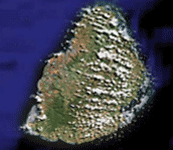
|
 |
|||||||||||
|
|
|
|
|
|
|
|||||||
|
Mauritius information
|
|
ACCOMMODATION
|
RESTAURANTS
|
NIGHTLIFE
|
EXCURSIONS
|
VISIT
|
DRIVE
|
|
|
Mauritius Information South
The South of Mauritius, is where the island's history started. The "Vieux Grand Port" bay being the first port of Mauritius, the region received the first Dutch explorers" camps in 1638. When in 1735, the well-known French Governor Francois Mahé de Labourdonnais decided to develop the actual port (Port-Louis) right on the opposite side of the island, as main harbour and administration centre, the South / Southeast did not lose any of its importance. The village of Mahebourg nearby, named after him is a great landmark of this part of the history of Mauritius. It was much later, under the British Empire that this region was gradually left behind. As at today, the South is the least developed and most authentic region of Mauritius with very few hotel resorts.
|
|
Climate
The South and South-east coasts face the Southeast trade winds, which prevails almost all year round. The region often gets too windy especially in winter where high-pressure cells pass by. On the other hand, this part of the island remains relatively fresh in summer. The beach of Pointe d'Esny is said to be the best spot for lazy summer days. Beware of sunburns as the fresh breeze may lead you to think that you are not getting burnt until it's too late. A T-Shirt or bathing suits is all you need in summer (November to March.) A sweatshirt is welcome in the evenings during the months of September, October, April and May. During winter, (June to September) it can get cool as early as 5 p.m. and warm clothes are necessary after sunset.
|
|
Topography
The South coast is not typical to the postcard illustrations of Mauritius. It has very few beaches and resorts. Driving along the South coast offers the possibility to alternate between sea and hill views; between sun bathing and trekking. The vegetation in the South / Southeast is the richest due to the high humidity prevailing all year round, and contains many indigenous trees and plants. |
|
Souillac
Souillac is one of the most important villages of the south spread into scattered settlements along the coastal road. Named after French Governor François de Souillac, this village played a crucial role in the development of the south of Mauritius as it used to be the place where the sugar from the mills of the South was embarked on coaster sailing boats to reach Port Louis. This activity stopped only in the early 1900"s when the railway network was stretched to Souillac. Today Souillac offers to the visitors of the 21st century several historical remains such as the "Batelage quay" the ancient railway station, the courthouse, the police station, the basaltic church and the coral-built "La Nef"; house of famous Mauritian poet Robert Edward Hart.
La Nef has two sets of history. The version as described in the page dedicated to it, is all true but somehow incomplete. This version does not mention that It was destroyed in 2001 without warning by some over-zealous government officer who obviously did not attend his history classes at school. This house entirely built of coral stones (including the roof,) had this impalpable atmosphere of the past times, and was the main source of inspiration for this author. Thanks to strong reactions from historians and members of the public, the house has been rebuilt with some respect to its history as the concrete walls have been covered with the corals that used to make its walls. It is now a museum dedicated to the poet and has been inaugurated in august 2003. |
|
Our favorite village / town : Mahebourg
Atmosphere
The atmosphere of Mahebourg is lively, cheerful and friendly. It is one of the few places where, whether you are a tourist from Germany, France, or simply from another region of the island, it makes no difference to the people. The majority of its inhabitants being fishermen or field workers, the animation in Mahebourg start at daybreak to slowly fade out at dusk. Preserved from an excessive development, smiles are still free of charge. The People Like for most important villages of Mauritius, the population of Mahebourg consists of all the ethnics and religions present in Mauritius. This is not obvious to passers-by, as the ethno-cultural specificities have faded with time to leave room for the Mahebourg identity. Relaxed, respectful, open-minded, quiet and fascinating, the people of Mahebourg and its surroundings are what we can call true Mauritians. The Bazaar, open Monday to Saturday is far more authentic than the one of Port Louis; and less of a hassle to reach too. It is an excellent occasion to experience our description above. It is better to visit it on Mondays, when the Mahebourg fair is on. The atmosphere is indescribable; even pictures cannot tell these hundreds of funny things that happen every second that only an alert eye can catch. It is also a good place to buy some clothing and all sorts of kitsch objects. They are generally useless, therefore absolutely necessary. Bargaining is part of the game… Mahebourg and its surroundings To visit Mahebourg hosts the Naval museum of Mauritius. Its interest rests not only in its collection of exhibits, but also in the history of its building. Erected in the 1760's, the building hosting the museum was built by Mr. Jean De Robillard in architecture typical of those times. The place was permanently adapted to the necessities of each period. It is in one of its rooms that rival commanders from the French army and the Royal Navy received first aid, side by side, during the famous "Vieux Grand Port" battle in 1810. The H. Rault biscuit factory; one of the oldest factories of Mauritius still in operation in its original state. It can be described as a “live museum.” Ile Aux Aigrettes is the only accessible islet of Mauritius where the vegetation is 100 % Endemic. Managed by the Mauritian Wildlife Foundation, Ile aux Aigrettes is a genuine eco-tourism trip. |
|
Other places of interest in the South
Visiting the South is a must for its scenery and for discovering the feeling of the colonial history of Mauritius. To our opinion, the south is by far the region that contains the most interesting places for amateurs of the French colonial history. From the "official" lists of places of interest, we would recommend, for the sake of brevity: The Rochester Falls and Le Souffleur.
The Rochester falls is one of the few waterfalls accessible to all. Not to be compared to the Victoria Falls of Zimbabwe, it creates nonetheless the opportunity to change from the seaside and take a walk in the wild nature. Le Souffleur (The geyser). This fascinating natural activity caused by the engulfing of waves in rocky caves, was for a long time, offering a fascinating show but unfortunately, due to the erosion of the rocks it does not occur anymore. Whether "in activity" or not, the scenery around "Le Souffleur" is worth a stop and a walk. “La Vanille Reserve des Mascareignes” is a park for strolls through luxuriant Greenery where a variety of other species can be watched in total safety. Crocodiles are bred there and are part of the attraction.The rest of the park is really orientated around ecological matters and contributes in the preservation and restoration of the endemic flora. Snorkelling and / or diving over several incredible sites, namely within the marine park of "Blue Bay". Catamaran cruises in the longest lagoon of Mauritius, in and around the "Grande Riviere Sud-Est" and "Ile aux Cerfs." Hiking, Mountain biking, quad-biking and buggy tracks, the few eco-tourist excursions of Mauritius. Golf - The magnificent "Golf du Chateau" golf course in the region of Bel Ombre and the 9-hole course at the Shandrani Hotel.
Exportal Ltd
Email:
Phone: +230 5421 1070
Royal Road, Haute Rive
Rivière du Rempart, Mauritius
By Bernard Cayeux
Update November 2012
|

Mauritius Information | Images of Mauritius | Mauritius Map | RSS Feeds | Sitemap | Contact us | About us
Advertise with us | General Conditions | Tourism | Holidays | Destinations | Travel | Vacations | Villas Rentals
| Tweet | Follow @tropicscope |
© Copyright 2008-2015, All rights reserved.







